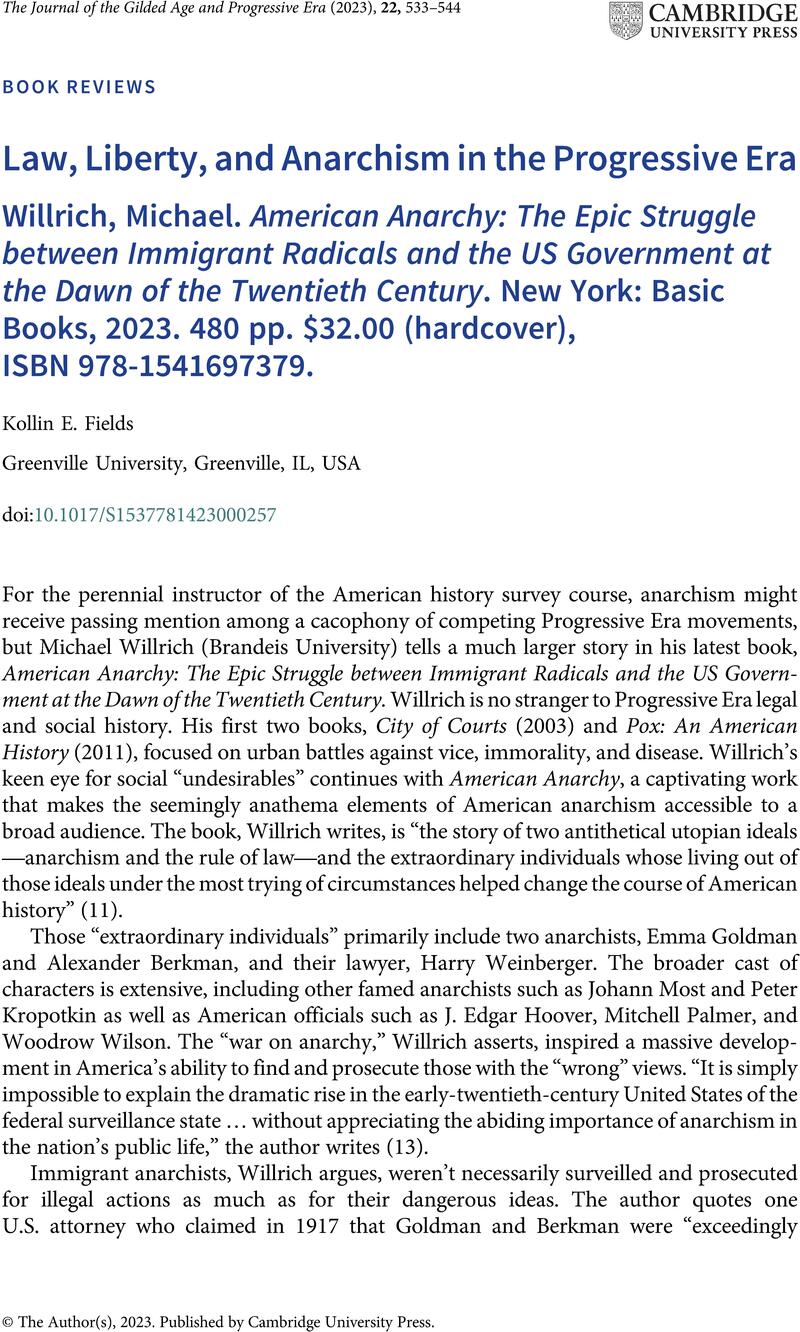No CrossRef data available.
Article contents
Law, Liberty, and Anarchism in the Progressive Era - Michael Willrich. American Anarchy: The Epic Struggle between Immigrant Radicals and the US Government at the Dawn of the Twentieth Century. New York: Basic Books, 2023. 480 pp. $32.00 (hardcover), ISBN 978-1541697379.
Review products
Michael Willrich. American Anarchy: The Epic Struggle between Immigrant Radicals and the US Government at the Dawn of the Twentieth Century. New York: Basic Books, 2023. 480 pp. $32.00 (hardcover), ISBN 978-1541697379.
Published online by Cambridge University Press: 15 December 2023
Abstract
An abstract is not available for this content so a preview has been provided. Please use the Get access link above for information on how to access this content.

- Type
- Book Reviews
- Information
- Copyright
- © The Author(s), 2023. Published by Cambridge University Press


